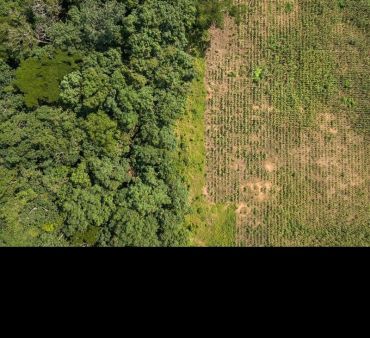
Climate change has far-reaching effects on global biodiversity, impacting ecosystems, species, and ecological interactions. This report synthesizes critical findings from multiple authoritative sources to provide a comprehensive understanding of the environmental impacts of climate change on biodiversity.
Rising Temperatures and Ecosystem Disruption
The 2024 Global Risk Report highlights that climate risks are interconnected and mutually reinforcing, leading to abrupt and irreversible changes in Earth's systems. For instance, scientists announced that temperatures in 2023 were 1.48°C above pre-industrial averages, with a likely breach of the 1.5°C threshold within the next 12 months, which could severely impact ecosystems [1].
One stark example of these changes is the projected near-total loss of coral reefs in a 1.5°C world, which is anticipated in the early 2030s in nearly all IPCC scenarios. Coral reefs, which act as barriers against extreme weather, will die off, leading to cascading effects such as increased weather damage and undermined marine ecosystems, tourism, and global food security [1].
Biodiversity Decline and Land-Use Change
A significant multi-model study indicates that global biodiversity has already declined between 2% and 11% during the 20th century due to land-use changes alone. Although land-use change remains a critical factor, climate change is predicted to become the primary driver of biodiversity loss by mid-century [2][4].
The study underscores the combined impacts of land-use change and climate change, leading to biodiversity loss in all world regions. Scenarios ranging from sustainable development to high emissions anticipate significant strain on biodiversity and ecosystem services, revealing considerable regional, model, and scenario variations [2][4].
Mutually Reinforcing Risks

The World Economic Forum's Global Risks Report 2024 identifies extreme weather events, critical changes to Earth systems, biodiversity loss, and ecosystem collapse as among the most severe risks over the next decade. The report emphasizes the interconnected nature of climate and biodiversity risks, with climate change exacerbating the decline of biodiversity and associated ecosystem collapse [5].
Impacts on Specific Species and Ecosystems

The IPCC's 4th Assessment Report and recent studies indicate that climate change has significant impacts on biological diversity, affecting ecosystems, species, and genetic diversity. For instance, sea urchins in the Red Sea are dying en masse due to a mysterious disease, threatening the coral reefs they help maintain by feeding on algae [3][9].
Potential Solutions and Conservation Efforts

Encouragingly, research reveals that conservation actions, such as the establishment of protected areas and the management of invasive species, can improve or slow the decline of biodiversity. For example, predator management on Florida’s barrier islands has enhanced nesting success for species like loggerhead turtles [7].
Additionally, deforestation rates in the Congo Basin were significantly lower in areas managed under Forest Management Plans. These examples suggest that targeted conservation efforts are generally effective and increasingly so over time due to better strategies and increased funding [7].
The Call for Integrated Action

Environmental experts call for integrated approaches to tackle the interconnected crises of climate change and biodiversity loss. This includes bolstering policies to protect biodiversity, scaling up finance to support vulnerable regions, and creating synergies between climate action plans and biodiversity strategies [1][6][5].
The UN emphasizes the economic sense in timely and effective actions, as every dollar invested in ecosystem restoration can generate significant economic benefits. Continued land degradation and biodiversity decline could lead to severe consequences such as crop failures, water shortages, and endangered communities [6].
Technological Innovations and Future Prospects

Several emerging technologies and methods are promising in mitigating some effects of climate change and promoting sustainable resource use. These include genetically modifying organisms to enhance resilience, developing efficient ammonia production techniques to reduce greenhouse gas emissions, and innovating soil health assessment technologies [9].
Conclusion
The environmental impacts of climate change on biodiversity are profound and multifaceted, affecting ecosystems, species, and services critical to human well-being. However, integrated and innovative conservation efforts present a path forward, offering hope for mitigating these effects and promoting a healthier planet.
By understanding and addressing these challenges, humanity can take decisive action to protect and restore biodiversity, ensuring a sustainable future for all life on Earth. As highlighted by experts, immediate and collaborative efforts are essential to turning the tide against these interconnected environmental crises [1][2][3][4][5][6][7][8][9].
Get more accurate answers with Super Pandi, upload files, personalized discovery feed, save searches and contribute to the PandiPedia.
Let's look at alternatives:
- Modify the query.
- Start a new thread.
- Remove sources (if manually added).